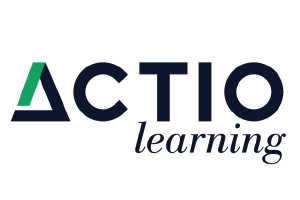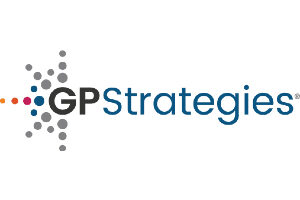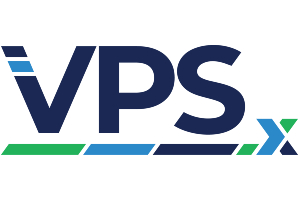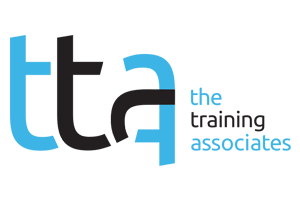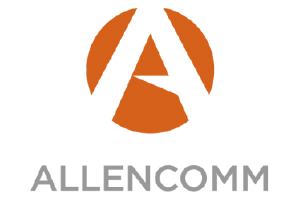Technological, social, economic and environmental factors change how we work today. Crafting a learning and development (L&D) strategy is a leader’s responsibility — to attract, retain and develop talent in this changing world. In this article, we’ll explore some of those strategic opportunities.
Defining the Future of Work
From geographically distributed workforces, new compensation models, and culturally diverse teams to technology-centered workplaces, gig work, and virtual collaboration — the future of work is undergoing seismic changes. As L&D leaders, it’s more important than ever to stay ahead of the curve and understand how these factors are reshaping the way we work, learn and live. By embracing change and aligning L&D with business objectives, we can create a culture of innovation that drives value for our organizations and learners.
At the same time, it’s important to recognize that change can be difficult. The challenge for L&D leaders is to embrace change, not resist it. This requires a willingness to experiment with innovative approaches and technologies and a commitment to ongoing L&D. By taking a proactive approach to change management, we can create a culture of continuous improvement that drives success in the future of work.
Alignment of L&D With Business Strategy
As L&D leaders, one of the most important responsibilities is to build an L&D strategy that aligns activities with an organization’s business strategy. This requires a deep understanding of the current and future needs of the workforce as well as a commitment to delivering learning solutions that drive value for our organizations and learners.
Here are some steps to follow to achieve this goal:
-
- Identify organizational business goals: Understand the organization’s vision, mission, values and strategic objectives. These goals should adhere to SMART criteria, which means they should be specific, measurable, achievable, relevant, and time-bound.
- Align with senior management and stakeholders: Communicate with senior management and key stakeholders to gain support and input for the L&D strategy. This ensures alignment with organizational expectations and priorities.
- Conduct assessments for skills gaps and competencies: Analyze current and future skills and competencies required by the organization. Use methods like surveys, interviews, and tests to identify strengths, weaknesses, emerging trends and opportunities, and challenges (SWOT).
- Ensure your strategy is inclusive: Inclusivity is key to aligning L&D with business objectives. By designing and implementing a comprehensive and inclusive L&D strategy that covers the entire learning and performance ecosystem, we can create a culture of innovation that drives success in the ever-changing landscape of work.
- Establish performance measurement criteria: Evaluate and measure the impact of the L&D strategy on business outcomes. Use metrics to prove ROI, customer satisfaction, employee engagement, productivity, quality and innovation. Measuring ROI assesses the financial impact of an L&D strategy while measuring competencies evaluates capabilities. Both are vital for performance measurement, offering insights on effectiveness, efficiency and growth potential. Assess how the L&D strategy improves skills and competencies and translates into improved performance and ROI.
Align with other successful L&D leaders and the performance measurement strategies they employ in their organizations. To this end, it’s vital for L&D leaders to research what peers are doing, what metrics they apply to , and what innovations they’ve embraced in order to stay competitive. Finally, adjust the roadmap/strategy based on feedback and results and make changes accordingly.
By following these steps, L&D professionals can ensure that their activities contribute to the achievement of organizational goals and meet the needs of the current workforce.
An L&D Roadmap for the Modern Workforce
Here’s a roadmap to help L&D leaders prepare for the future of work:
-
- Create a comprehensive L&D strategy: A comprehensive L&D strategy is a dynamic document and reflects the organization’s vision, mission and values. It includes a phased approach with clear milestones and metrics that will be evaluated and adjusted as needed. This will ensure that the L&D strategy is effective, relevant and impactful.
- Understand organizational culture: L&D Leaders need to be aware of how the organizational culture influences learning preferences, behaviors and outcomes. A deeper understanding of what’s needed includes resources, equipment, connectivity, language and localization requirements. It also means incorporating diversity, equity and inclusion (DEI) principles into the L&D strategy to foster a culture of respect, belonging and growth. According to LinkedIn Learning’s 2023 Workplace Learning Report, 41% of organizations now realize the value DEI plays in employee retention. A culturally responsive L&D strategy built today will enhance engagement, performance, retention and innovation in the long run.
- Understand learner awareness and comprehension: Understanding how learners learn is crucial for the future of work. With new generations joining the workforce, it’s important now more than ever, to determine how learners learning. Acquiring these metrics allows organizations to explore different learning modalities and to cater to individual preferences, maximizing the effectiveness of future training programs.
- Embrace innovative technology: By understanding learner preferences, organizations can identify and incorporate immersive learning technologies such as augmented reality (AR), virtual reality (VR), and mixed reality (MR). These learning technologies provide real-life scenarios and simulations, enhancing retention, comprehension and on-the-job performance.
- Examine cost projections and benchmarking: By examining the potential expenses associated with resources, technology, design and deployment, learning experts can make informed decisions that drive value for their organizations and learners. Benchmarking against industry standards allows comparisons and rankings of various learning metrics, resulting in a more accurate representation of the L&D strategy’s financial implications.
Align Talent Management (TM) and L&D
LinkedIn Learning’s Workplace Learning Report also found that 77% of L&D leaders work in cross-functional roles, including 56% that engage with talent management (TM). The TM-L&D alliance is crucial for employee retention, with 93% of organizations expressing concern about this critical alliance. Organizations must build an HR strategy to ingrain learning into the company’s DNA. To address this, training programs should focus on upskilling and reskilling employees, ensuring their continued relevance within the organization.
L&D plays a pivotal role in designing, implementing, delivering, tracking and measuring learning initiatives; but its impact should extend beyond that. To ensure a comprehensive approach to employee development, it’s essential to include TM in your L&D strategy. By aligning L&D with business objectives and TM strategies, organizations can benefit from ongoing support, valuable feedback and a holistic understanding of the full lifecycle of development. This alliance enhances the overall effectiveness of the strategy and contributes to the success of employee growth and retention.
Keep L&D Strategy Current
The strategy must evolve at the speed of business — or faster, if possible! Revisiting the strategy quarterly will allow L&D to measure progress against the initial plans and assess accomplishments to date. It is essential to investigate any changes that occur within the organization since the strategy’s implementation. Ask these questions: Have there been shifts in the business strategy? Is there a need to update the L&D strategy based on these changes?
Additionally, it is crucial to consider employee dynamics, such as attrition rates, job movements and any mergers or acquisitions that have taken place. Adjustments to the L&D strategy are inevitable to stay aligned with the evolving needs of the organization. By proactively staying ahead of these changes, organizations can ensure the strategy’s effectiveness and achieve more accurate and measurable outcomes. Regularly reviewing and updating the L&D strategy enables organizations to adapt to dynamic business environments and maximize the impact of their L&D initiatives.
Final Thoughts
Multitudes of technological, social, economic, and environmental factors continue to reshape the way we work, learn, and live. The future of work is rapidly changing, and as L&D leaders, we must prepare ourselves to embrace that future. By aligning L&D with business objectives as part of a robust L&D strategy, L&D leaders can strategically plan to attract, retain and develop talent. This approach will enhance our relevance and impact on the business, thus ensuring organizational success.
Need inspiration for your next eLearning program?
Check out our eLearning case study collection. Through these case studies, we will show you how to design outstanding learning solutions that drive employee performance and create a positive impact on business KPIs.


